Mysore pak
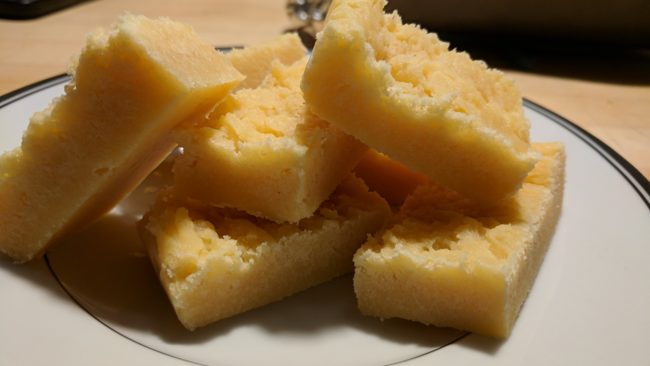
The strongest memory I have of my grandmother is that of her standing in the kitchen of our Cuddapah house in Andhra Pradesh. I was about seven years old and had gone to their house for summer holidays. My cousins had not arrived yet and so there was nothing for me to do except run about the vast house when I caught the smell of ghee (clarified butter) in the air. I knew that smell. She was making my favourite sweet Mysore pak, a sweet made purely of gram flour, ghee and sugar. I dashed to the kitchen, but she stopped me even before I could cross the living room.
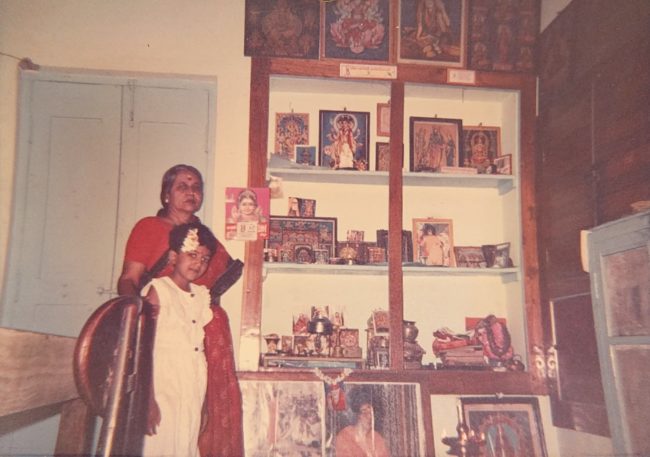
“Don’t come in. The oil is hot!” she warned.
So I stood there, transfixed, watching her without blinking, lest I miss something. The old blue walls of the kitchen framed her thin figure so perfectly. She had two large vessels on the stove, and with a huge ladle, was pouring ghee from one vessel into the other. When all the ghee was done, she switched off the gas and and poured the contents of the vessel onto a tray.
“Come, see this,” she said.
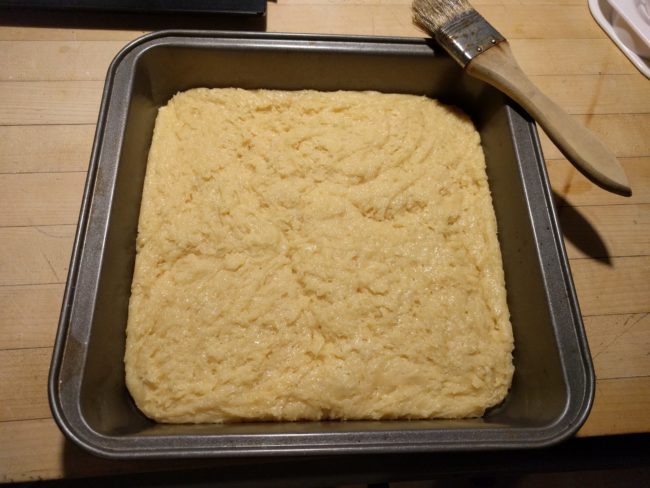
I ran to her side and saw the thick liquid bubble and froth. She sprinkled sugar on it and we both watched as it cooled down and hardened. It took less than five minutes, and once it was set, she took a big knife and cut it into tiny squares.

Greedy as I was, I put an entire square into my mouth. It was still a bit hot in the middle, and disintegrated the second it touched my tongue. So delectable was the taste that I wanted to just sit there and eat the whole tray by myself, but she shooed me away after my fifth piece. For the rest of the day, I sat in the living room, watching every family member who entered the kitchen, running after them to make sure that they did not take more than one piece of mysore pak, making sure that there was something left for my next round.
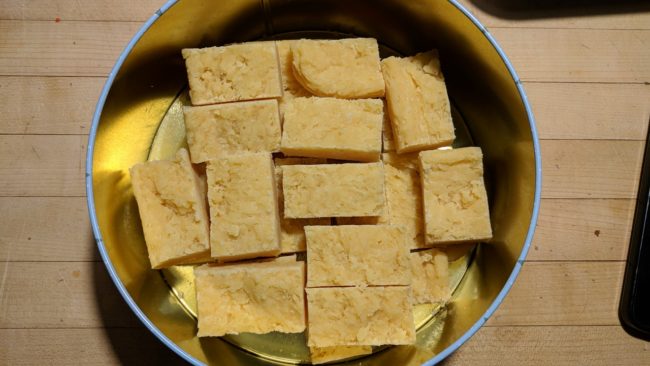
Right before the holidays, I was experimenting with Indian sweets for a client. I tried many things, from the complex son papadi (which is sugar, pulled until it becomes thin and whispy, coated in besan flour) to the simple badam halwa (a sweet made from almond paste). But, when I heard that the person receiving the box is also from Madras, I decided to make mysore pak.
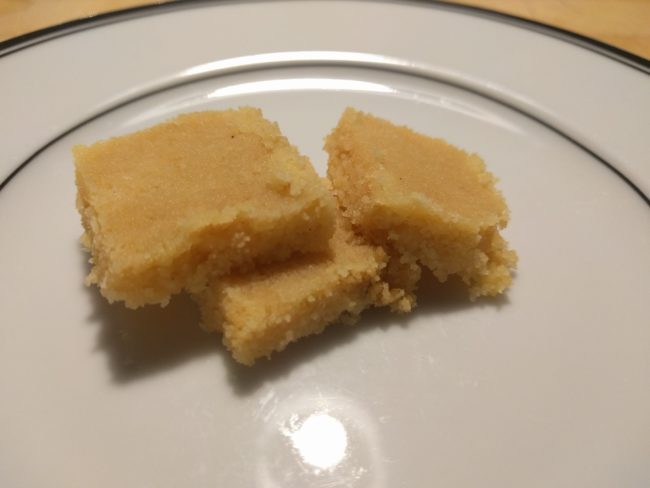
Last Winter when I had gone home, my mom’s sister had come to stay with us and she had made mysore pak for me. Thankfully, I had remembered to record the whole process. Looking at the video, it didn’t seem too difficult, but quite frankly, I underestimated the process. Also, my need to make everything from scratch added more steps to the process. But not to worry, after the third try, I consulted the experts, figured out all my mistakes and got it right.

I always start with making my own ghee, but you can also pick up a bottle at most supermarkets. This sweet drinks up a lot of ghee so it is always good to have a little more than the ingredient measurement, just in case.
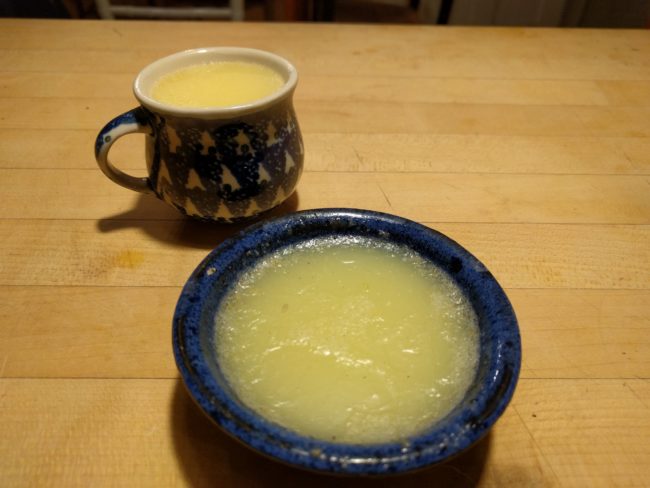
The besan or gram flour has to be dry roasted in a pan before starting, to get rid of the raw taste. Later, when you add it to the sugar solution, it all happens very quickly and it helps if the flour is pre-cooked just a little. Make sure that you roast it over a low flame. It shouldn’t change colour.
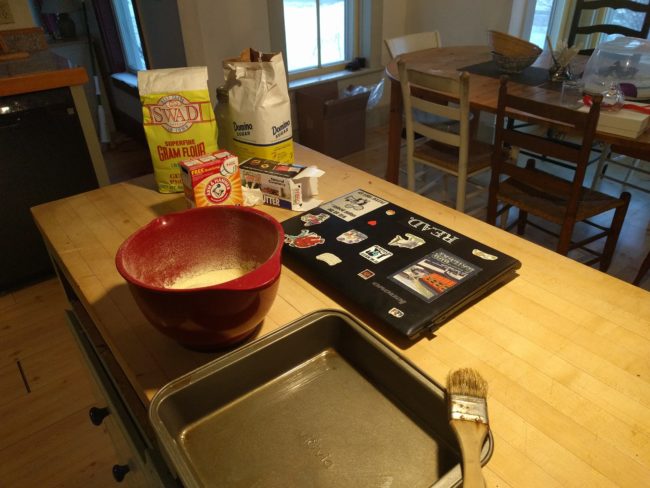
This is important because the beauty of mysore pak is the gradient inside. It goes from dark in the middle to light, glistening, inviting on the outside. Once the besan is cooked, I also like to dissolve it in a couple of tablespoons of ghee. This helps make sure that there are no lumps and also when it comes to mixing it with the sugar.
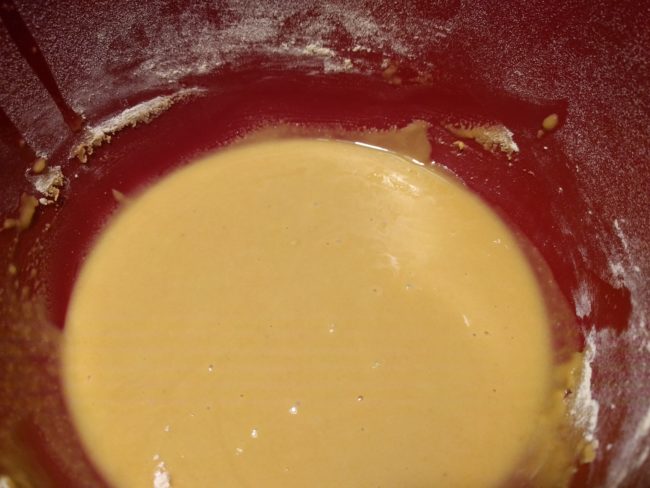
The trick to this sweet is all in the timing. After you mix the flour and sugar, you start adding the ghee, bit by bit. Each time, the ghee should bubble and froth, indicating that the flour is cooking. This will soon get absorbed. Think of it as the flour drinking the ghee. Once it is full, you’ll be able to see the flour pull away from the sides, leaving behind the ghee. This is the indication for the sweet being done.
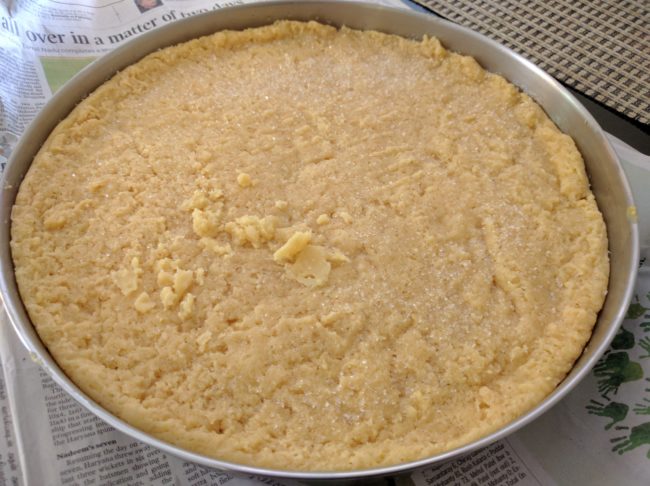
Pour this onto a greased baking pan, I recommend something like a cake pan as you need to give the sweet some height. Allow it to set, this won’t take long. You can even sprinkle some sugar on top for texture. Honestly, I wouldn’t recommend it if you are using Domino-brand sugar. I know it says granulated sugar, but it is not coarse enough. From my experience, it just melts on top of the sweet. It used to work back home because the sugar crystals were bigger. I like it even without the sugar on top.
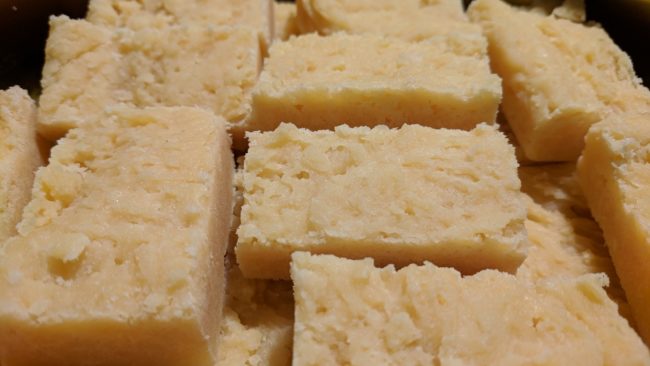
Once it cools, cut it into rectangles. Now, take a piece, find a seat and look at what you’ve created. That smell! Take a bite, let it melt in your mouth. Enjoy.
Simple gram flour cakes so soft, it melts in your mouth in a matter of seconds.
Prepare a square pan by greasing it with some ghee. Set it aside.
On a low flame, dry roast the gram flour for about five minutes, until the raw smell of the flour goes away. Sift this and set aside.
Heat the ghee. Add a few tablespoons of hot ghee to the flour and mix thoroughly, making sure there are no lumps.
In a large pot/saucepan, mix the sugar with two tablespoons of water. Place this on medium heat and let the mixture come up to a boil. It should basically come to a single-string consistency.
Leave the ghee on low heat. It has to be hot when you add it to the sugar syrup-flour mix.
Add the gram flour and mix until well combined. Remember to always keep stirring.
With a big spoon, add hot ghee to the flour mix and stir well until all the ghee is absorbed. Each time you add the ghee, it will bubble and froth a bit, Repeat this until the flour stops absorbing the ghee and it pulls away from the sides.
Add the baking soda and stir rapidly for half a minute. This is to create the air bubbles.
Pour this mix into the pan and allow it to cool. This should take about 5 minutes.
With a sharp knife, cut the mix into even rectangles.
Gently remove the pieces and enjoy!
Ingredients
Directions
Prepare a square pan by greasing it with some ghee. Set it aside.
On a low flame, dry roast the gram flour for about five minutes, until the raw smell of the flour goes away. Sift this and set aside.
Heat the ghee. Add a few tablespoons of hot ghee to the flour and mix thoroughly, making sure there are no lumps.
In a large pot/saucepan, mix the sugar with two tablespoons of water. Place this on medium heat and let the mixture come up to a boil. It should basically come to a single-string consistency.
Leave the ghee on low heat. It has to be hot when you add it to the sugar syrup-flour mix.
Add the gram flour and mix until well combined. Remember to always keep stirring.
With a big spoon, add hot ghee to the flour mix and stir well until all the ghee is absorbed. Each time you add the ghee, it will bubble and froth a bit, Repeat this until the flour stops absorbing the ghee and it pulls away from the sides.
Add the baking soda and stir rapidly for half a minute. This is to create the air bubbles.
Pour this mix into the pan and allow it to cool. This should take about 5 minutes.
With a sharp knife, cut the mix into even rectangles.
Gently remove the pieces and enjoy!